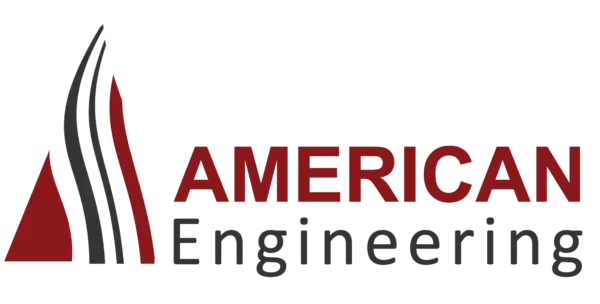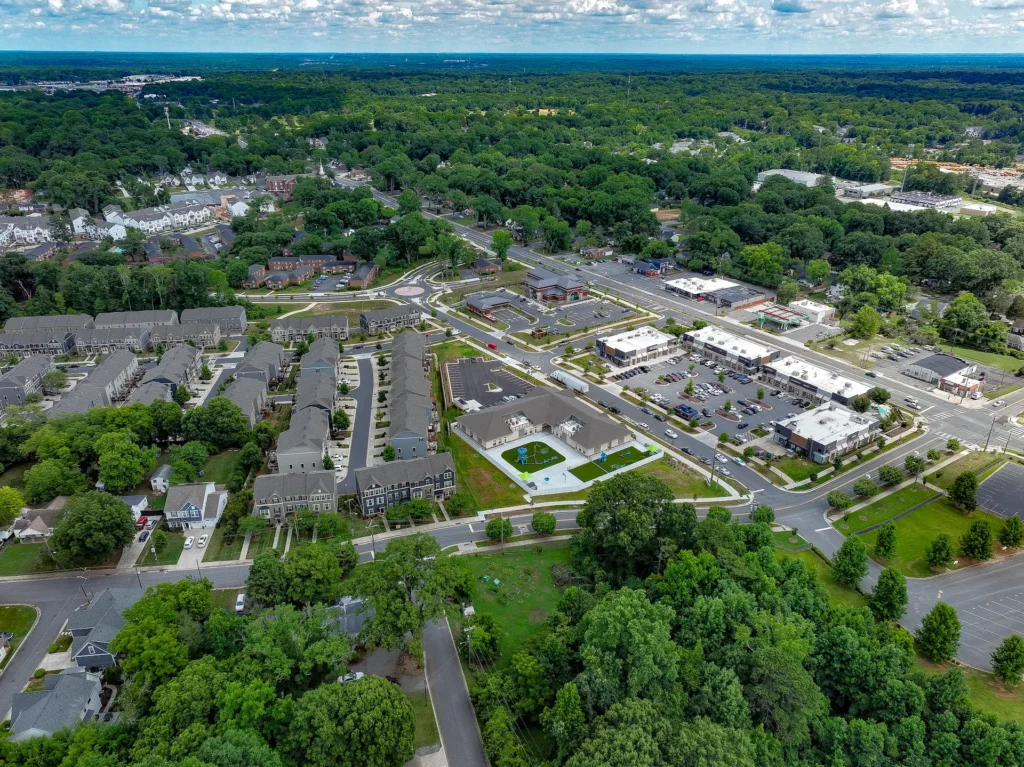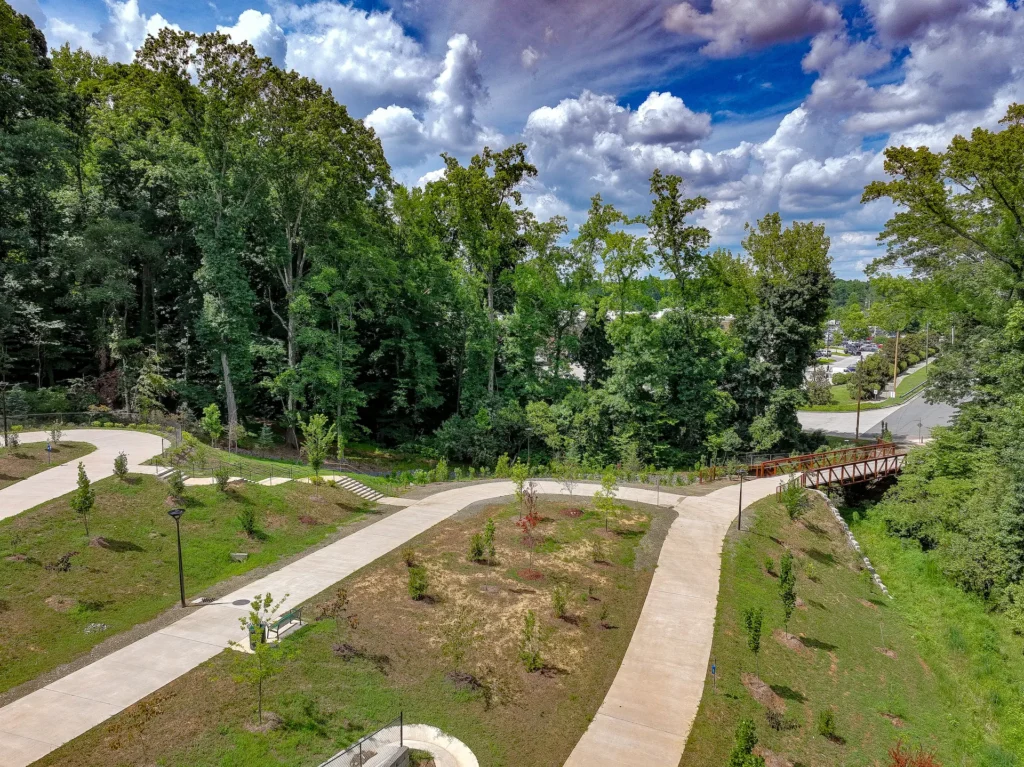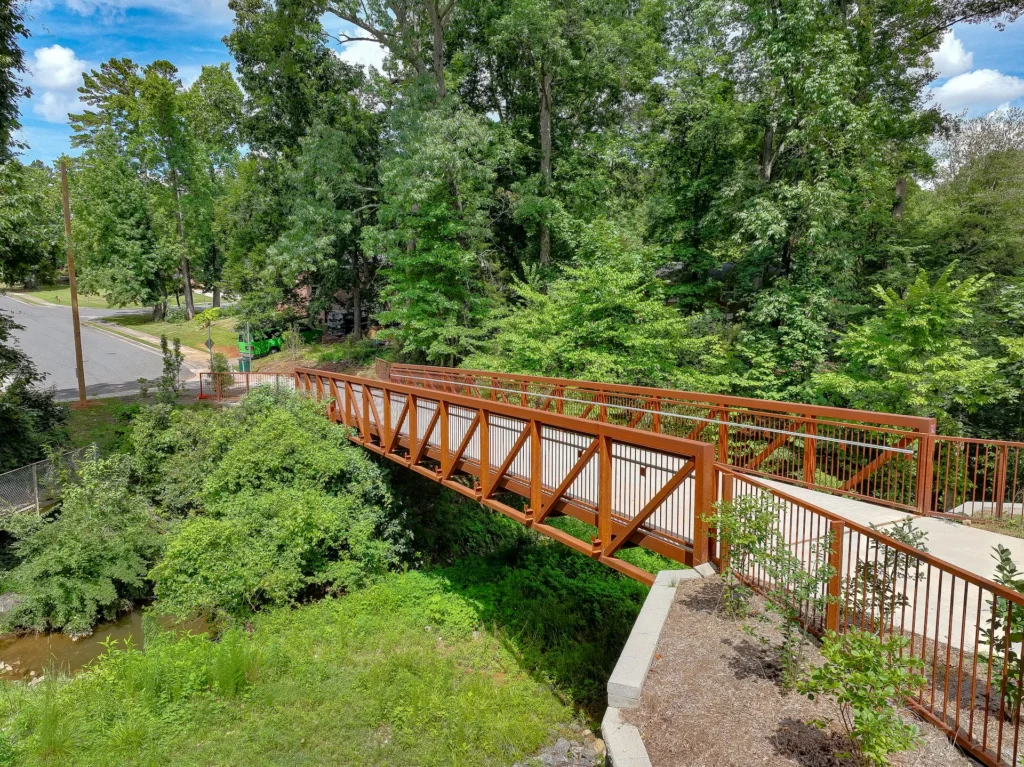The City of Charlotte sought to ease congestion and add connectivity in the Independence Boulevard and Monroe Road corridors. What started as a traditional street connectivity project supporting the City’s Land Acquisitions and Street Connections (LASC) program, evolved into a creative pedestrian-centered project that connected previously isolated neighborhoods.
As part of the City of Charlotte’s LASC Program, American Engineering was tasked with providing planning and engineering design services implement the vision of the Independence Boulevard Area Plan (IBAP) in support of economic development and revitalization along the Independence Boulevard Corridor. A preliminary list of 50 projects were identified based on compliance with Community Investment Plan (CIP) goals, IBAP vision and market study recommendations as well as from earlier studies completed for the corridor. Several of the projects have included coordination with CATS proposed LYNX Silver Line to improve access to the proposed station areas.
American Engineering led the design of some of the highest priority projects including the realignment of Shade Valley Road to intersect Monroe Road across from Commodore Street. Beyond the Shade Valley realignment, the City was eager to provide enhanced connectivity for the Oakhurst & Amity Gardens neighborhoods. One of the initial concepts included connecting two sections of Pierson Drive that had been separated by a large stream.
Through neighbor engagement and a community workshop with residents from the Oakhurst and Amity Gardens neighborhoods, one common theme heard was the desire to provide pedestrian connections between neighborhood streets in Oakhurst and existing Pierson Drive. The community also expressed concern about intersection safety and vehicle speeds along Monroe Road.
The community spoke, and the City listened. The result was American Engineering’s planned and designed multi-use paths connecting Pierson Drive to Chippendale and Erickson Roads, traffic calming for the Oakhurst and Amity Gardens neighborhoods, and a roundabout at the intersection of Shade Valley Road and Oakhurst Commons Drive.
While the pedestrian-centered multi-use path, united neighborhoods, and provided connectivity to nearby commercial properties, it served another purpose. Through collaboration, use of existing topography and environment features, and creative engineering and landscape architecture design, the community gained a welcoming park feature.







